
Are Rooftop Solar Panels Worth It?Concrete Tiled Solar PVSlate Tiled Solar PVFlat Roof Solar PVGreen Roof Solar PVIntegrated Solar PanelsSolar Roof TilesSolar Rooftop CostsCost Of Solar Based on System SizeDesigning Your Rooftop SystemAnnual Savings With Rooftop SolarFinding The Right Solar InstallerRooftop Solar FAQ
Are Rooftop Solar Panels Worth It?Concrete Tiled Solar PVSlate Tiled Solar PVFlat Roof Solar PVGreen Roof Solar PVIntegrated Solar PanelsSolar Roof TilesSolar Rooftop CostsCost Of Solar Based on System SizeDesigning Your Rooftop SystemAnnual Savings With Rooftop SolarFinding The Right Solar InstallerRooftop Solar FAQ
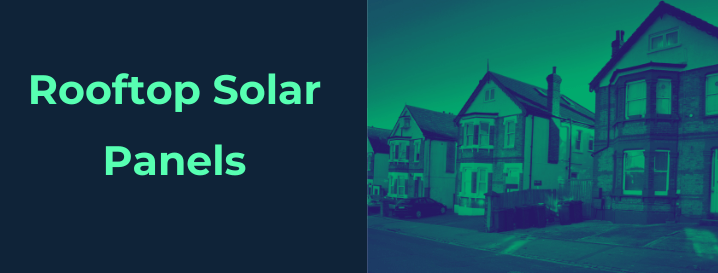
Going solar with rooftop PV panels allows you to take control of your energy costs while reducing your carbon footprint. With electricity prices constantly rising, many UK homeowners are looking to solar as a smart, eco-friendly investment.
Rooftop solar panels can significantly reduce electricity bills, provide income via the Smart Export Guarantee, increase property value, and lessen your environmental impact.
With these benefits, your solar investment could go a long way towards paying for itself in 7-12 years, followed by decades of virtually free power.
Here are the key benefits:
Slash your electricity bills with solar power generation. That's potentially hundreds of pounds in savings per year.
Lock in lower energy costs for decades and avoid unpredictable price hikes from suppliers.
Earn income from surplus solar electricity exported to the grid through Smart Export Guarantee payments[1].
Increase your home's value by up to 14% by having an established solar PV system.
Shrink your carbon footprint by up to 1.5 tonnes per year by displacing grid electricity.
Sources: [1]
Photovoltaic cells in the panels absorb photons from sunlight and convert them into electrons, generating direct current (DC) electricity.
An inverter converts the DC power into usable alternating current (AC) electricity to power your home's outlets and appliances.
Any surplus solar energy not used is exported to the grid through a smart meter, earning you money from your supplier.
Even on cloudier days, solar PV reduces your home's reliance on grid electricity.
Adding battery storage lets you use your solar energy at night for maximum savings.
As long as your roof gets full sun exposure, solar PV provides emissions-free energy independence.
The two main rooftop solar PV panel types in the UK are:
Monocrystalline panels - With a distinctive black color and efficiency of 15-22%, these are the highest performers.
Polycrystalline panels - Slightly lower output at 15-18% efficiency but cost less with their blue color design.
Your installer will recommend the optimal PV panel technology and properly size your system based on your household needs, available roof space and budget.
Solar panels can either directly attach to roof tiles or mount above them on frames.
Your installer will survey your roof and position panels for maximum exposure to the sun's rays.
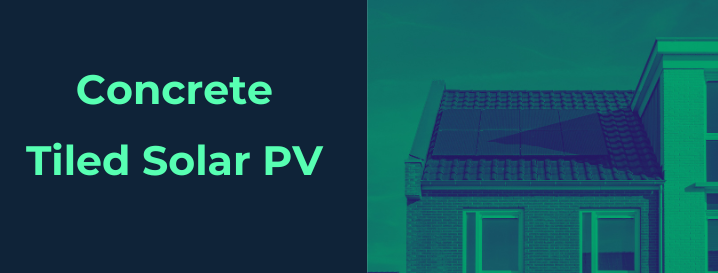
Concrete tile roofs are a very common choice for solar PV systems. The process for mounting panels on top of concrete tile involves:
This type of non-flush top-tile mount is quick and minimises disruption to the roof. It allows the concrete tiles to remain fully intact once the solar system is operational.
Overall, concrete tile roofs provide an ideal base for securely mounting and integrating solar panel kits with the proper flashing and seals.
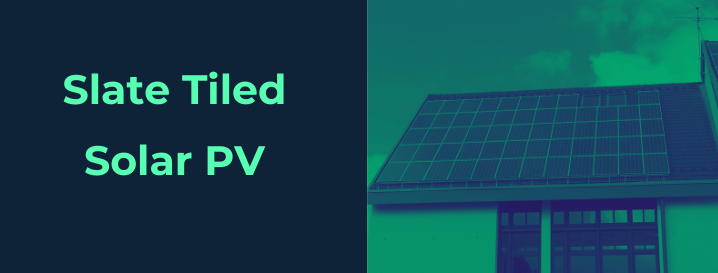
While both concrete & slate roof tiles work for solar, installers need to account for these differences in their approach, materials and pricing.
Proper installation is key for durability and performance.
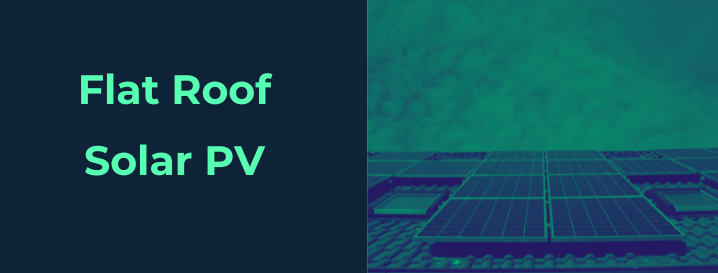
Flat roofs are a prime candidate for solar PV systems. The vast flat space on top of commercial buildings, factories, and some homes provides an ideal surface for maximising solar electricity generation.
To install a solar array on a flat roof, the process typically involves:
With no ridges or slopes, flat roofs enable solar installers to maximise the solar collecting surface and capture the greatest solar radiation. Positioning is also easier without concerns over angled areas or obstructions.
The scale possible on large commercial flat roofs can generate massive solar electricity production. With proper planning, materials and installation methods, flat roofs offer the ideal platform for rooftop solar PV systems.
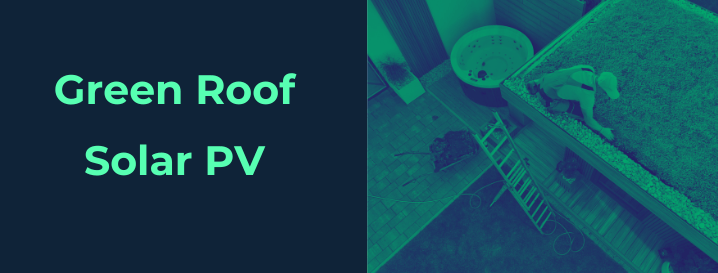
Green roofs, also called living roofs, are rooftops covered with soil and vegetation planted over a waterproof membrane. By combining green roof and solar PV technologies, you get the best of both worlds!
Green Roof PV allows generating clean energy from the sun whilst retaining the environmental benefits of a natural roof garden.
Installing solar panels on a green roof involves a partnership between the two systems:
Strong waterproofing protects your home from moisture whilst nourishing roof plantings.
Drainage provides irrigation for vegetation and safe runoff for the roof.
Solar mounting frames secure through the soil into decking beneath to safely add PV.
Panels are optimally angled to maximise sunlight exposure for power.
Hardier plant varieties like sedum are planted around and between panels.
The plants help cool the solar panels, boosting their productivity. The elevated panels provide beneficial shade and reduce water loss from the greenery.
Combining solar PV and green roof technologies offers homeowners several perks:
🌱 Extend the life of your roof with eco-friendly protection
⚡️ Generate clean energy from the sun to power your home
💰 Reduce monthly electricity costs and dependence on the grid
💧 Conserve water from improved drainage and irrigation
🌡 Boost solar panel output thanks to the plants' cooling effects
🏡 Enhance aesthetics with environmentally conscious design
Through symbiotic design, your living roof can help your solar system thrive whilst producing renewable power. It's a sustainable investment in your home's future.
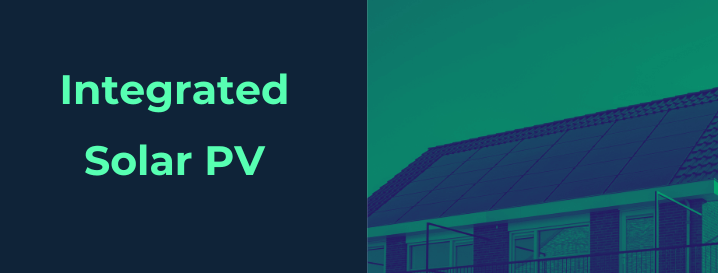
These innovative solar solutions are designed to blend seamlessly with your home's aesthetics while still harnessing the sun's power. Pretty cool, right?
In essence, integrated panels (also known as solar photovoltaic or PV integrated systems) are designed to be a part of your home's structure rather than an add-on. They're typically built into the roof, replacing traditional roofing materials. This gives your home a sleek, modern look while also generating renewable energy.
What's so great about integrated solar panels?
Aesthetic Appeal: These panels are designed to blend right into your roof, providing a sleek and streamlined look.
Space Saving: Because they're part of your roof, integrated panels don't need extra space.
Energy Efficient: Just like traditional solar panels, integrated systems convert sunlight into electricity, helping to lower your energy bills.
Now, while integrated panels are an excellent option for many homeowners, there are a few things to consider:
Installation Cost: Integrated systems can be more expensive to install than traditional solar panels, due to the complexity of the installation process.
Maintenance: If a panel needs to be replaced, it can be more challenging and costly because the panels are integrated into the roof.
Even with these considerations, the environmental and financial benefits of solar energy make integrated panels a compelling option.
According to the Energy Saving Trust, a typical domestic solar PV system can reduce your carbon footprint by 1.3 to 1.6 tonnes of carbon dioxide per year. And that's something to feel good about!
Selecting the right solar panel system for your home is a personal decision, one that depends on your specific needs, budget, and aesthetic preferences.
If you value a streamlined look and are willing to invest in the initial installation, integrated panels could be the perfect fit for your home.
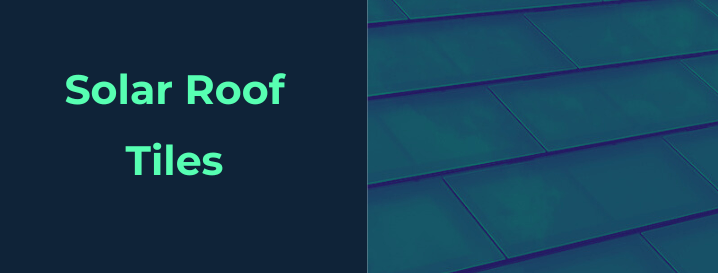
Imagine a world where every home is a small power station, efficiently generating its own clean, green energy. With solar tiles, that vision is closer than you might think.
Let's take a closer look at solar tiles, what they are, how they work, and why they might just be the perfect fit for your home.
Solar tiles, also known as solar shingles or photovoltaic tiles, are an innovative type of solar product. They're designed to look and function like conventional roofing materials, but with an added bonus – they can generate electricity!
So, why should you consider solar tiles for your home? Let's dig in:
Integrated Design: Solar roof tiles blend seamlessly into your home's design, providing a slick, modern aesthetic that's sure to impress the neighbours.
Efficiency: While individual tiles may be less efficient than traditional panels, the ability to cover more of your roof can make up for this, leading to excellent energy generation.
Durability: Built to serve as both roof and generator, these tiles are designed to withstand the elements.
While solar tiles sound almost too good to be true, there are a few things to keep in mind:
Cost: The initial cost of solar tiles can be higher than traditional panels. But don't forget the potential savings on your energy bills over time!
Installation: Installing solar tiles is a more complex process than conventional solar panels. It's essential to find an experienced installer to do the job right.
Solar tiles are transforming the way we think about energy. They're an exciting development on the road to a more sustainable future, and they could be a fantastic option for your home.
According to the Energy Saving Trust, you could save and earn back up to £315 per year with solar PV tiles. That's a significant saving over time!
In the end, the decision to invest in solar tiles comes down to your specific needs, budget, and aesthetic preferences.
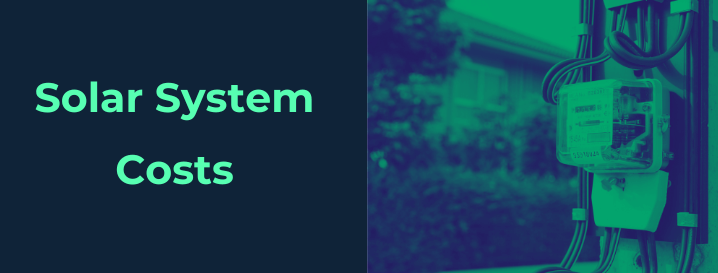
Let's take a look at the expenses involved in setting up a solar panel system without any confusing jargon.
The process of installing solar panels requires an upfront investment. As of 2024, the average cost of a solar PV system in the UK falls between £4,000 to £6,000. This figure includes the solar panels, whether they be monocrystalline panels, polycrystalline panels, or in-roof systems, and the installation process.
These costs can differ based on:
The complexity of the installation on your roof
Don't let the initial cost deter you, though! This is an investment that will pay dividends over time!
Once your solar panels are working, generating electricity even on cloudy days, the continued costs are quite low. You'll need to plan for potential upkeep and repairs, but many systems come with extensive guarantees that cover significant problems.
This is where it gets exciting! With solar panels working efficiently on your roof, you can significantly cut down your electricity bills. According to the Energy Saving Trust, a solar panel system could save you between £85 and £220 a year, depending on where in the UK your home is located, be it Scotland, Belfast, Wales, Manchester, or Northern Ireland.
Moreover, with the UK's Smart Export Guarantee (SEG), you get paid for any surplus electricity you produce and send back to the grid. Yes, your roof could start generating income!
While the initial costs of installing solar pv can seem high, remember to consider the long-term savings and benefits. You're not just reducing your electricity bills – you're also making a sustainable choice for a greener tomorrow.

Your budget will play a significant role in determining the size of the solar panel system you opt for. To help you make an informed decision, we've created a straightforward solar panel guide outlining the cost of solar panels based on system size.
The cost of solar panels, whether they are roof integrated or monocrystalline panels, largely depends on the system size. Naturally, the larger the system, the higher the initial cost. However, a larger system also means more electricity generated, which could lead to more savings in the long run.
Let's examine some average costs for different system sizes.
Here's a handy table that breaks down the average costs for different system sizes:
| System Size (kWp) | Average Cost (£) |
|---|---|
| 1 | 1,500 - 3,000 |
| 2 | 2,500 - 4,000 |
| 3 | 4,000 - 6,000 |
| 4 | 5,500 - 8,000 |
These figures incorporate the cost of the solar panels themselves and the cost of installation, which includes mounting the panels on your roof and connecting them to your household appliances.
While a larger system requires a more substantial initial outlay, it's important to consider the long-term savings. A more extensive system will generate more electricity, reducing your dependence on the grid, and lowering your electricity bills. If your solar panels produce surplus electricity, you could even earn money through the UK's Smart Export Guarantee (SEG).
Here's a quick example:
Bear in mind, these figures are estimates based on averages, so your actual savings might be higher or lower. Yet, they provide a rough idea of the kind of savings you can expect.
Choosing the right size of solar panel system for your roof can be a balancing act between what you can afford to spend now and the potential savings you can make in the future. Armed with this solar guide, you're better equipped to make an informed decision.
Remember, while the initial cost of installing solar panels can seem high, it's an investment. Over time, you can reap significant financial benefits, and contribute to a more sustainable future. Here's to your journey towards a greener, more energy-efficient home!
Let's walk through the process together, step by step, to design a system that suits your home, lifestyle and energy needs.
To kick things off, have a peek at your electricity bills. They'll help you understand how much electricity you're using now, which will guide you in figuring out the size of the solar PV system you'll need.
Next, take a good look at your roof. Here's what to consider:
Space: Does your roof have enough space for your shiny new panels?
Direction: South-facing roofs are brilliant for solar panels in the UK, but don't worry if your roof faces east or west, it'll still get the job done.
Shading: Are there any pesky trees or tall buildings casting shadows on your roof? That could reduce the amount of direct sunlight your panels receive.
Condition: If you're thinking about getting a new roof, it's best to do that before installing the solar panels.
Now, it's time to pick out your solar panels. If you're keen on maintaining your home's aesthetics, you might fancy in-roof systems. These panels look sleek, making them an attractive addition to your roof.
Before you start installing solar, check if you need planning permission, especially if your home is in a conservation area or is a listed building. If you live in Northern Ireland, the rules might be different, so it's worth having a chat with your local council.
It's always a good idea to plan ahead. If you're thinking about installing solar assisted heat pumps or getting an electric car, you'll need to generate more electricity. Designing your system with these future needs in mind will save you a world of trouble later on.
Once you’ve picked your panels and prepared your roof, they’ll need to be securely attached using a mounting frame. After that, you’ll connect them to your home’s electrical system. That way, you’ll be able to use the electricity your panels generate. And on those cloudy, grey UK days when there isn't enough sunlight, you can still use electricity from the grid.
Yes, installing solar PV panels does involve some upfront costs. But hang on, because they can be a real money-saver over time. The electricity your solar PV system generates can bring down your electricity bills.
Plus, if your system generates more electricity than you can use, you can sell the surplus back to the grid. This means you can earn export payments under the Feed-in Tariff scheme set up by the UK government. Now, isn't that fantastic?
Designing a rooftop solar PV system might seem a bit overwhelming at first, but with a little planning and a friendly guide (that's us), you'll be well on your way.
Please note, Glow Green do not provide in-roof or solar tile installations.

Let's chat about how using a rooftop solar PV system can lead to some fantastic annual savings for you. We'll keep it simple and cheerful, so you can see just how much going solar can benefit your wallet and the environment.
The star of the show – your rooftop solar PV system – works hard to convert sunlight into electricity for your home. This means you'll be drawing less energy from the grid, and that translates into lower electricity bills.
But what happens when your panels produce more electricity than you can use? Well, it doesn't go to waste. With the UK government's Smart Export Guarantee (SEG), energy suppliers actually pay you for every unit of electricity you export back to the grid. It's like your very own green side hustle. These payments can add £100-£250 to your savings each year.
Energy prices can be a bit like a rollercoaster, up one minute and down the next. But when you generate your own electricity, those price hikes won't bother you anymore. You're in control of your own energy destiny.
Here's a bonus – a rooftop solar PV system can even boost your property’s value. Research suggests that properties with solar panels can add up to 14% to your property value [2].
Thinking of getting an electric car or installing a SAHP in the future? Your solar panels can help power them too, saving you even more in the long run.
Installing a rooftop solar PV system is not just an environmentally friendly choice. It's a smart financial decision that can lead to significant savings every year [1]. So, while there's a bit of an upfront cost, the savings you'll see on your energy bills – and the peace of mind from protecting against future price hikes – really do add up. Now, how's that for a sunny financial forecast?

Ready to make your home a bit greener with a rooftop solar system? Great! But, how do you find the right installer to make it happen? Here's our friendly guide to help you out:
To start, make sure your supplier is accredited by the Microgeneration Certification Scheme (MCS). This is a green seal of approval that ensures they meet the standards. Also, if you want to benefit from the Smart Export Guarantee, you need to meet this requirement. The guarantee pays you for the extra electricity you generate and send back to the grid.
A good installer should offer a variety of rooftop solar pv systems to fit different roof types and sizes. No matter if you're putting on a new roof for a big building or adding a system to a house roof, they'll have what you need.
When asking for a solar quote, make sure it includes the cost of the system, installation, and any upcoming maintenance. And remember, you're not just paying for the system itself; you're investing in future energy savings and income from export payments. So, make sure the quote is cost-effective in the long run.
Good customer service can make your solar journey smooth sailing. A helpful supplier will respond promptly to your queries and provide clear, straightforward answers. They should guide you through the entire process, from the initial consultation to the final installation.
The ideal supplier will handle everything from start to finish. This includes any paperwork, like applying for the Smart Export Guarantee or seeking planning permission if your property is in a conservation area.
By following these tips, you're sure to find a supplier who will work alongside you on your journey towards a greener home.
Absolutely, having solar panels on your roof is worth considering! Installing solar panels can significantly reduce your electricity bills. In the UK, where electricity costs are high, this can translate into substantial savings.
Plus, with the Smart Export Guarantee, you can get paid for the excess electricity you generate and feed back into the grid.
When you generate your own green electricity, you reduce your carbon emissions and help the environment. Remember, every home is different, so think about things like how your roof faces and the amount of shade it gets when choosing solar panels.
The number of solar panels needed to power a house depends on your household's electricity usage and the specific solar panels' efficiency you choose.
On average, a typical UK home uses around 3,100 kWh of electricity per year. If we consider a standard solar panel with an output of 250W, you would need around 12 solar panels to generate enough energy for a typical home.
But this is a rough estimate. To get a more accurate number, you'd need to consider factors like the amount of sunlight your area gets and the size of your roof.
The amount of solar panels you need for your roof depends on a few things. These include your energy needs, how efficient the panels are, and how much sunlight your roof gets. As a rough guide, for a UK home using 3,100 kWh of electricity per year, and using standard 250W panels, you'd need around 12 solar panels.
However, this can vary based on your individual circumstances. For example, if your roof is shaded or doesn't face the ideal direction, you might need more panels to generate the same amount of electricity.
Free solar panels were once offered through schemes known as 'rent-a-roof' in the UK.
Under these schemes, companies would install solar panels on your roof for free and in return, they would keep the Feed-in Tariff payments. But, since Feed-in Tariff scheme ended in 2019, these offers have become much less common.
Make sure to check with local solar companies or energy providers for special offers. Remember to read the terms and conditions. In most cases, buying your own solar panels may be a more cost-effective solution in the long run.